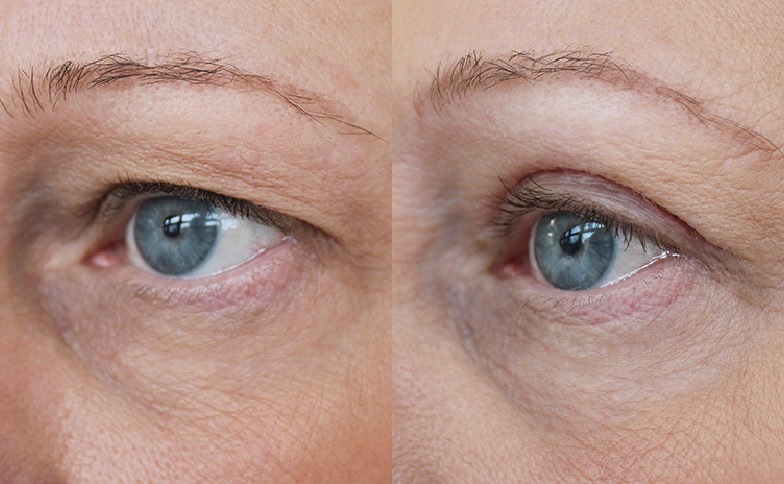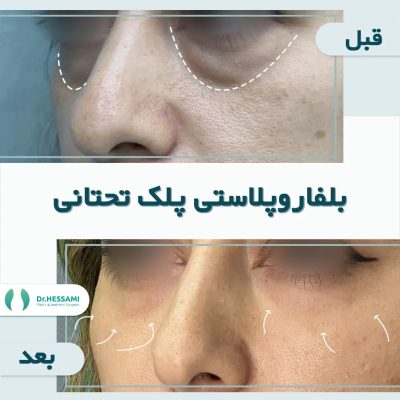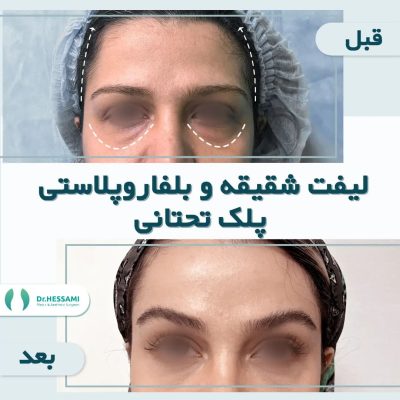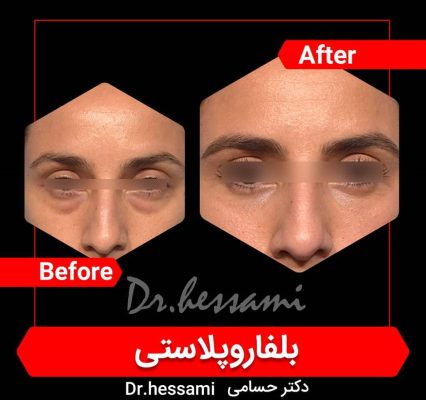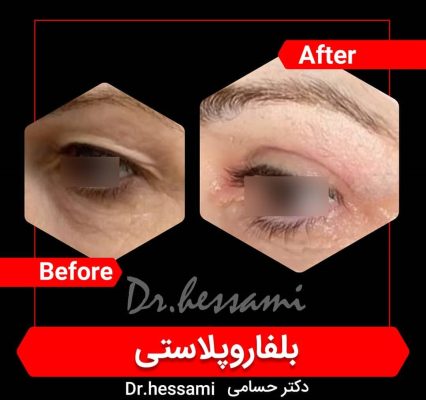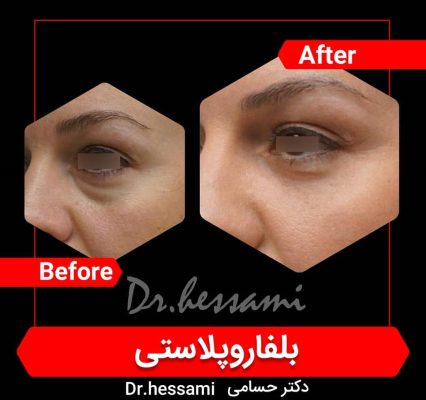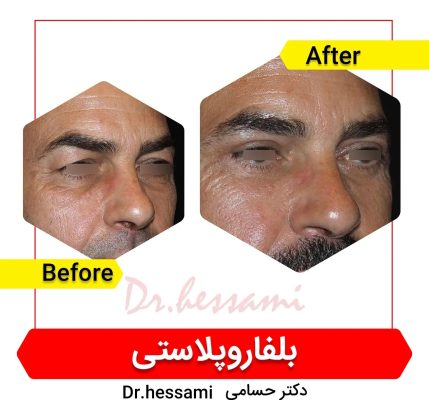Blepharoplasty in Iran – eyelid surgery
Blepharoplasty in Iran is a surgical procedure commonly known as eyelid surgery. It is performed to improve the appearance of the eyelids by removing excess skin, fat, and muscle from the upper and/or lower eyelids.
During the procedure, the surgeon makes incisions along the natural creases of the eyelids, allowing them to remove or reposition the necessary tissue. For the upper eyelid, excess skin and sometimes fat deposits are removed to eliminate drooping or sagging. Lower eyelid surgery primarily addresses under-eye bags and puffiness caused by excess fat.
Blepharoplasty in Iran can address both cosmetic concerns and functional issues. Cosmetic blepharoplasty aims to enhance the appearance of the eyes, making them look more youthful and rejuvenated. Functional blepharoplasty, on the other hand, focuses on correcting vision problems caused by the excessive skin weighing down on the eyelids.
The procedure is typically performed under local anesthesia with sedation or general anesthesia, depending on the patient’s preference and the extent of the surgery. Recovery time varies from person to person, but most individuals can expect some swelling and bruising around the eyes, which usually subsides within a couple of weeks.
Upper blepharoplasty
Upper blepharoplasty in Iran , also known as upper eyelid surgery, is a surgical procedure that focuses on improving the appearance of the upper eyelids. It is commonly performed to address concerns such as droopy or sagging eyelids, excess skin, and fat deposits.
During an upper blepharoplasty procedure, the surgeon makes incisions along the natural crease of the upper eyelid. The length and placement of the incisions are carefully determined to minimize visible scarring. The surgeon then removes or repositions excess skin, muscle, and sometimes fat to achieve the desired outcome.
The main goals of upper blepharoplasty are to:
1. Remove excess skin: Over time, the skin of the upper eyelids can lose its elasticity and start to sag, resulting in a tired or aged appearance. Upper blepharoplasty removes the excess skin and tightens the remaining skin, creating a more youthful and refreshed look.
2. Address droopy eyelids: Some individuals may have droopy or ptotic eyelids, where the eyelid skin hangs over the natural crease and impairs vision. Upper blepharoplasty can correct this condition by trimming the excess skin and repositioning the eyelid tissues to restore a more open and alert appearance.
3. Reduce puffiness: In some cases, excess fat deposits may accumulate in the upper eyelids, creating a puffy or bulging appearance. The surgeon can remove or redistribute these fat deposits to achieve a smoother contour.

Upper blepharoplasty is typically performed under local anesthesia with sedation or general anesthesia, depending on the patient’s preference and the extent of the procedure. The recovery period involves some swelling and bruising, which gradually subsides over a few weeks. Patients are advised to follow post-operative care instructions provided by their surgeon to ensure proper healing.
Lower blepharoplasty
Lower blepharoplasty in Iran is a surgical procedure that focuses on improving the appearance of the lower eyelids. It is commonly performed to address concerns such as under-eye bags, puffiness, wrinkles, and excess skin in the lower eyelid area.
During a lower blepharoplasty procedure, the surgeon makes incisions either just below the lower eyelash line or on the inside of the lower eyelid (transconjunctival approach). The choice of incision technique depends on the specific needs of the patient. Through these incisions, the surgeon removes or repositions excess fat, tightens the lower eyelid muscles, and removes or trims any excess skin.
The main goals of lower blepharoplasty in Iran are to:
1. Address under-eye bags and puffiness: Lower blepharoplasty targets the fat deposits that can accumulate and create the appearance of bags or puffiness under the eyes. The surgeon can remove or reposition this excess fat to create a smoother and more rejuvenated lower eyelid contour.
2. Reduce wrinkles and fine lines: Excess skin and tissue in the lower eyelids can contribute to the development of wrinkles and fine lines. Lower blepharoplasty in Iran can remove or tighten this excess skin, reducing the appearance of wrinkles and creating a more youthful look.
3. Improve lower eyelid support: In some cases, the lower eyelids may have weakened support, leading to a lax or sagging appearance. Lower blepharoplasty can address this by tightening the lower eyelid muscles and providing improved support to the lower eyelid area.

Lower blepharoplasty in Iran is typically performed under local anesthesia with sedation or general anesthesia. Recovery time varies, but patients can expect some swelling, bruising, and temporary dryness or irritation in the treated area. Following the post-operative care instructions provided by the surgeon is crucial for proper healing.
Cost and price of eyelid surgery in Iran
The general cost of eyelid surgery can be performed in the office with anesthesia
If general anesthesia is needed, it is also performed in a surgery clinic or hospital
The price of eyelid surgery varies depending on whether it is performed in a surgery clinic or hospital
The price of eyelids in Iran varies between 400 and 700 euros
To calculate Dr. Hessami’s eyelid surgery price, please send the following advice and information via WhatsApp
- Face photo from the front
- your age
- If you have already done surgery on the face
- If you have a specific disease
inform
If you want to operate in Tehran, Dr Hessami, click the button below and follow the stepsStart your therapeutic journey
What you expect from blepharoplasty
The expectations from blepharoplasty in Iran , whether it’s upper or lower eyelid surgery, can vary from person to person. Here are some common outcomes and expectations associated with blepharoplasty:
1. Improved appearance: The primary goal of blepharoplasty is to enhance the appearance of the eyelids. By removing excess skin, fat, and muscle, blepharoplasty can provide a more youthful, rejuvenated, and refreshed look to the eyes. The procedure can address concerns such as droopy or sagging eyelids, under-eye bags, puffiness, and wrinkles.
2. Reduction of under-eye bags and puffiness: Blepharoplasty can effectively address under-eye bags and puffiness caused by excess fat deposits in the lower eyelids. By removing or repositioning the fat, the surgeon can create a smoother and more rejuvenated lower eyelid contour.
3. Improvement in vision (functional blepharoplasty): In cases where excess skin in the upper eyelids impairs vision, functional blepharoplasty can be performed. By removing the excess skin, the procedure can help improve the field of vision and eliminate any obstructions caused by drooping eyelids.
4. Enhanced self-confidence: Many individuals choose blepharoplasty to improve their self-confidence and feel more comfortable with their appearance. When the eyes look more alert, youthful, and symmetrical, it can contribute to a boost in self-esteem and overall satisfaction with one’s appearance.
5. Long-lasting results: While the natural aging process will continue, the results of blepharoplasty are long-lasting. The excess skin, fat, and muscle that are removed or repositioned are typically not replaced, meaning that the improvements achieved through surgery can be maintained for many years.
It’s important to have realistic expectations and understand that the results of blepharoplasty can vary based on individual factors such as age, skin elasticity, and overall health. Consulting with a qualified plastic surgeon or an oculoplastic surgeon will help you understand what can be realistically achieved through the procedure and discuss your specific goals and expectations.
Recovery After blepharoplasty
Recovery after blepharoplasty in Iran , whether it’s upper or lower eyelid surgery, typically involves a healing process that spans several weeks. Here is a general overview of what you can expect during the recovery period:
1. Immediately after the surgery: After the procedure, you may experience some swelling, bruising, and mild discomfort around the eyes. The surgeon may apply ointment and cover the incision sites with bandages or sutures. You might be prescribed pain medication to manage any discomfort.
2. First few days: It’s common to experience swelling and bruising around the eyes, which can peak within the first 48 hours after surgery. Applying cold compresses and keeping your head elevated while resting can help minimize swelling. You may also be advised to avoid activities that can increase blood flow to the face, such as bending over or strenuous exercise.
3. First week: Swelling and bruising will gradually decrease during this time. You may be able to remove the bandages or sutures after a few days, depending on your surgeon’s instructions. You might experience dryness or itchiness in the treated area. Your surgeon may recommend using lubricating eye drops to alleviate any discomfort and keep the eyes moisturized.
4. Two to three weeks: Most of the visible swelling and bruising should subside by this point. However, some residual swelling may persist, especially in the lower eyelids. You may start to notice the initial results of the surgery, with the eyes looking more refreshed and youthful. It’s important to continue following your surgeon’s post-operative care instructions and avoid activities that could strain the eyes, such as heavy lifting or rubbing the eyes.
5. Several weeks to months: The final results of blepharoplasty become more apparent as the healing process continues. The incision lines will gradually fade and become less noticeable. It’s important to protect your eyes from excessive sun exposure and wear sunglasses when outdoors.
It’s crucial to attend follow-up appointments with your surgeon during the recovery period. They will monitor your progress, remove any remaining stitches if necessary, and provide guidance on when you can gradually resume normal activities.
Remember that individual recovery experiences can vary, so it’s essential to consult with your surgeon for specific post-operative instructions tailored to your needs. They will provide detailed guidelines on wound care, medication usage, and any restrictions or precautions to take during the recovery period.
Forehead lift or upper blepharoplasty right for me
Determining whether a forehead lift (also known as a brow lift) or upper blepharoplasty in Iran is right for you depends on your specific concerns and desired outcomes. Both procedures target different areas of the face and can address different issues. Here’s some information to help you understand the differences:
Forehead Lift (Brow Lift):
A forehead lift is a surgical procedure that addresses sagging or drooping eyebrows and forehead skin. It helps to lift the eyebrows to a more youthful position and smoothens forehead wrinkles. A forehead lift can be beneficial if you have:
1. Sagging or low-positioned eyebrows: If your eyebrows have descended over time, creating a tired or sad appearance, a forehead lift can help elevate them to a more youthful position.
2. Deep forehead wrinkles: If you have prominent horizontal lines or creases on your forehead, a forehead lift can help smooth out these wrinkles.
3. Forehead asymmetry: If you have uneven eyebrows or an asymmetrical forehead, a forehead lift can help create a more balanced and harmonious appearance.
Upper Blepharoplasty (Upper Eyelid Surgery):
Upper blepharoplasty specifically targets the upper eyelids to address concerns such as excess skin, drooping eyelids, or hooding. It can be beneficial if you have:
1. Excess skin on the upper eyelids: If you have loose or sagging skin that hangs over your eyelashes, creating a heavy or tired appearance, upper blepharoplasty in Iran can remove the excess skin and create a more open and refreshed look.
2. Hooded or drooping eyelids: If your upper eyelids obstruct your vision or make it difficult to apply makeup, upper blepharoplasty can help lift and reshape the eyelids, providing a more defined eyelid crease.
It’s important to consult with a qualified plastic surgeon or an oculoplastic surgeon who can evaluate your specific concerns, assess your facial anatomy, and discuss your desired outcomes. They will be able to recommend the most suitable procedure or a combination of procedures to achieve your goals. In some cases, a combination of a forehead lift and upper blepharoplasty may be recommended to address multiple concerns and achieve optimal results.
Blepharoplasty Incisions
During blepharoplasty in Iran , the surgeon makes incisions in specific locations to access and address the desired areas of the eyelids. The location and length of the incisions can vary depending on the type of blepharoplasty (upper or lower) and the individual patient’s needs. Here are the common incision techniques used in blepharoplasty:
Upper Blepharoplasty Incisions:
1. Subciliary Incision: This incision is made along the natural crease of the upper eyelid, just below the eyelashes. It allows the surgeon to remove excess skin, fat, or muscle and create a more defined eyelid crease. The scar from this incision is well hidden within the natural crease when the eyes are open.
2. Transconjunctival Incision: In some cases, the surgeon may choose to make the incision on the inside of the upper eyelid (conjunctiva). This technique is often used when only fat removal is necessary, and no skin tightening is required. The advantage of this technique is that it leaves no visible external scar.
Lower Blepharoplasty Incisions:
1. Subciliary Incision: Similar to upper blepharoplasty, a subciliary incision can be made just below the lower eyelashes to address excess skin, fat, or muscle in the lower eyelids. The incision is placed near the lash line, allowing the scar to be well concealed.
2. Transconjunctival Incision: For lower blepharoplasty, the transconjunctival incision is commonly used. It involves making an incision on the inside of the lower eyelid, hidden behind the lower eyelid conjunctiva. This technique is often used for fat removal or repositioning without the need for external skin incisions, resulting in no visible scarring.
The choice of incision technique depends on various factors, including the patient’s specific concerns, the extent of the surgery, and the surgeon’s preference and expertise. Your surgeon will determine the most appropriate incision technique for your needs and discuss the details with you during the consultation process.

